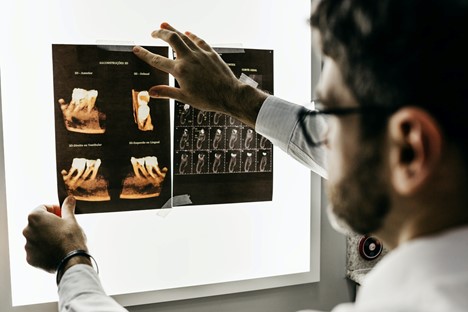The dental profession, like every other medical field, is constantly evolving, improving, and innovating. All of this is indeed for the betterment of dental care all over the world. Despite that, dentists face numerous challenges because their profession is constantly evolving and changing.
Here are the biggest challenges that face dentistry nowadays. Let’s find out how new dental technologies are transforming dentistry with Meisinger!
1. Teledentistry Facilitates Access to Care
Like many other medical providers, dental services have been forced to close during COVID-19’s early stages. While most offices have reopened, according to recent survey data from the ADA’s Health Policy Institute, more than half have reported lower patient volumes than before the epidemic.
Using digital tools such as asynchronous or synchronous video to deliver dental consulting or basic examinations can help bridge the gap. A pandemic brought telehealth to the forefront, and teledentistry has gained a lot of traction as a result. Having these technologies both help reduce viral transmission risk and assist dentists in complying with local health regulations makes sense.
According to a recent analysis, Tel dental care reduces travel-related stress for patients, particularly those who lack transportation or must drive long distances for access to dental care. Patients can also use teledentistry tools to determine if an emergency exists and an immediate visit to the dentist is necessary or if they can wait until their next scheduled appointment.
2. VR Distracts Patients
The use of VR (virtual reality) in dentistry is another new technology that could benefit patients. In a dental practice setting, digital distractions could be provided by virtual or augmented reality headsets. It is in a sense similar to the ceiling-mounted TVs currently installed in dental offices to provide patients with a distraction.
VR also consistently decreases users’ perception of pain: VR users reported a consistent decrease in pain when they used VR. By reducing pain and distracting the patient, VR can also lead to a better patient-dentist relationship, which leads to better care. Patients view the dentist as empathetic.
Students of dentistry can also experience dental procedures digitally with VR. It is beneficial for emergent issues that rarely occur but require specific experience to treat.
3. Artificial Intelligence Aids in Diagnostics
In Dentistry Today, it was reported that AI tools can now diagnose tooth decay more consistently than dentists when radiographs of the bitewing and peripheral region are examined. With billions of data points, such algorithms use available evidence to make decisions, giving them the edge over humans.
In spite of this, there is an increasing demand from clinicians and dental educators for artificial intelligence. These tools can help improve the accuracy of clinical treatment plans before irreversible procedures are performed and generate templates for dental students to use in dental treatment analysis.
4. For patients and practitioners, 3D printing is cost-effective
Dental practices can reduce total expenses and improve patient satisfaction by using low-cost, high-speed 3D printers.
Besides dental splints, 3D printing has also been used for medical models. Recent Nature articles report that cone beam computed tomography (CBCT) data of a patient’s dental structures is now easily available to dental practices. A 3D model of the patient’s jaw can then be developed using the volumetric image for which the CBCT data was collected. In this model, treatments can be evaluated, or specific surgical interventions can be planned.
Dental splints are made more accessible and cheaper using 3D printing to prevent tooth grinding. It was once necessary to create replacement splints slowly and at great cost after a broken splint broke. Splints can now be made in just over an hour.




